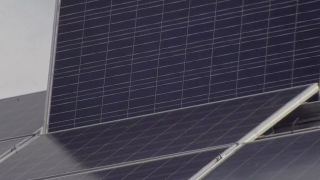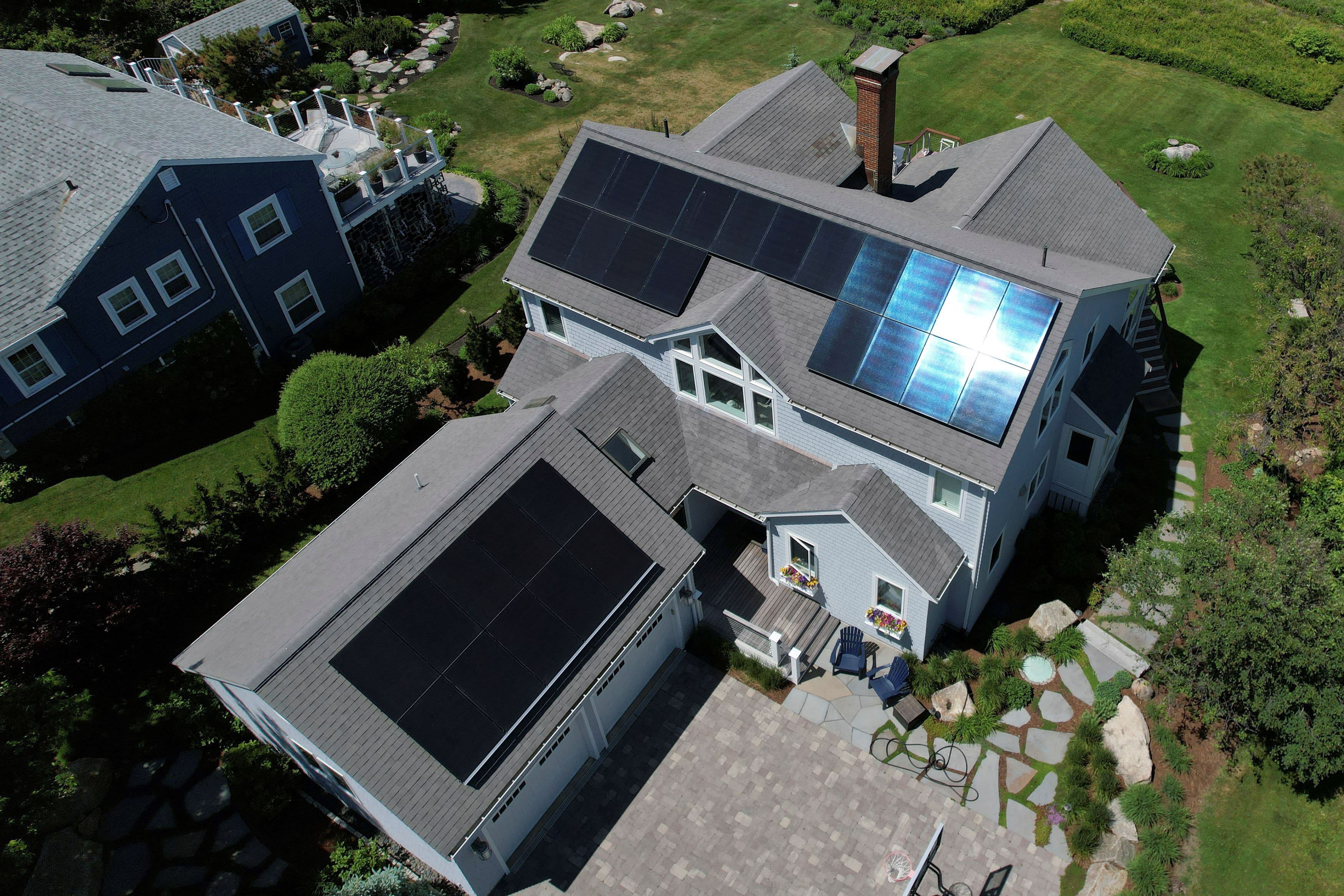
By the year 2050, the Baker administration envisions virtually all of the state's more than 5 million light-duty vehicles will run on electric power instead of fossil fuels, 80% of Massachusetts homes will be heated and cooled with electric heat pumps, and the statewide electrical infrastructure will be able to handle two and a half times more load than in 2020.
Those are some of the key benchmarks in a new climate and clean energy plan Gov. Charlie Baker's secretariat published Wednesday, outlining sector-specific emissions reduction targets and policy steps that will help Massachusetts achieve the legally required target of achieving net-zero statewide carbon emissions by the middle of the century.
WATCH ANYTIME FOR FREE
>Stream NBC10 Boston news for free, 24/7, wherever you are. |
The 2050 plan, which the Baker administration released on its way out the door of state government, seeks to formalize and expand a range of tactics already in play, leaning heavily on electrifying the transportation and building sectors and expanding clean energy sources such as offshore wind.
Energy and Environmental Affairs Secretary Beth Card said the 192-page document "represents the commonwealth's comprehensive and aggressive plan to achieve net-zero cost effectively and equitably."
Get updates on what's happening in Boston to your inbox. Sign up for our >News Headlines newsletter.
"To successfully achieve net zero in 2050, it is essential to transition our electricity system to clean energy and make Massachusetts transportation and buildings more energy-efficient and electrify those sectors," Card told reporters. "This effort will have significant implications for our economy, which is why we must engage closely with other state agencies, municipalities, businesses and residents."
"Really, this plan is a comprehensive sort of capture of what we think needs to happen next," Card later added.
State law requires Massachusetts to cut total greenhouse gas emissions at least 85% below 1990 levels by 2050, plus offset any remaining emissions by removing an equal or greater amount of carbon dioxide or its equivalent from the atmosphere.
The Baker administration plan sets specific sublimits for 2050 emission reductions for several sectors: 86% in transportation, 95% in residential heating and cooling, 92% in commercial and industrial heating and cooling, 93% in electric power and 72% in natural gas distribution and service.
Those sublimits are slightly stricter than they would need to be to achieve the 85% economy-wide reduction necessary to hit net-zero emissions, and the administration said that approach offers "margins for error."
Baked into those target figures is an expectation that policymakers, industries and individual Bay Staters can achieve major reforms in the two decades between 2030 and 2050, particularly in the transportation and heating and cooling sectors. For example, the Baker administration previously set the 2030 emissions sublimit for transportation at a 34% reduction below 1990 levels, 52 percentage points below the new 2050 target.
Card said transportation policies in the plan include continued investment to build out electric vehicle charging infrastructure and incentives to push more consumers to purchase electric vehicles. The MOR-EV program will provide rebates worth up to $3,500 for purchase or lease of an EV with a price of $55,000 or less, Card said, adding that the Department of Energy Resources will soon add rebates for low-income households and medium- and heavy-duty vehicles as authorized in a 2022 law.
The plan also factors in vehicle standards Massachusetts previously adopted requiring all light-duty vehicles sold in 2035 and beyond are either zero-emission or plug-in hybrids.
Binding together the transportation changes is a broad effort to reduce Bay Staters' reliance on traveling in their own personal cars. Instead, policymakers will work to encourage greater use of walking, biking and public transportation, including by constructing more housing near transit stations.
On the building front, the plan calls for creation of what Card called a statewide "benchmarking and labeling program" that would make more information public about building emissions, plus development of a "statewide climate finance accelerator" to drive more investments in buildings seeking to eliminate carbon emissions.
It also implements recommendations of the Commission on Clean Heat that Baker created via executive order. That panel published its final report last month, recommending steps such as development of a "clean heat standard" to incentivize building electrification and cleaner heating technology.
Another area of focus is on land conservation. The administration set a target of ensuring that at least 40% of lands and waters in Massachusetts are permanently conserved and shielded from development by 2050, an increase over the 27% that the plan says are now "legally protected in perpetuity."
Card said the plan also calls for crafting policies to limit the clearing of forests for solar developments and for planting at least 64,400 acres of trees in the coming decades.
"Achieving net-zero will require significant changes in how land is used throughout the commonwealth, including energy and transportation infrastructure, housing development and land conservation," Card said.
Energy Undersecretary Judy Chang pitched the new 2050 plan as a longer-term complement to the Baker administration's 2025 and 2030 plan, saying it "really explores all the other trajectory beyond 2030" necessary to achieve net-zero emissions by the century's midpoint.
"We need to increase communication about climate in general within the state and outreach to people that have to make individual decisions," Chang said. "It talks about the investments in educating the workforce and increasing investments in the workforce."
More on climate and green energy
Card said the Baker administration modeled its 2050 plan "to be flexible enough to respond" to new technological developments, federal policies and global trends, infrastructure siting or any other changes that could emerge in the next 27-plus years.
The Executive Office of Energy and Environmental Affairs on Wednesday also launched an online dashboard that the public can use to better understand how Massachusetts is faring along the road to its greenhouse gas emissions targets.
"With climate impacts already at our doorsteps, now is the time to take action for the future," said Conservation Law Foundation Vice President Caitlin Peale Sloan. "This plan is on the right track, especially when it comes to phasing out fossil fuels in our homes and on our roads. But we need to do more on environmental justice to make sure that no communities are left behind in the years ahead."
Wednesday's announcements land about two weeks before Baker and his energy and environmental affairs secretariat will give way to Gov.-elect Maura Healey, who plans a staff shake-up that involves hiring U.S. Environmental Protection Agency Principal Deputy General Counsel Melissa Hoffer as a new Cabinet-level climate chief.
One challenge with which Healey might need to grapple sooner rather than later is the fate of one of the major offshore wind developments in the state's pipeline.
Commonwealth Wind filed a motion last week asking the Department of Public Utilities to dismiss its power purchase agreements with utility companies, then reopen the process of procuring the 1,200 megawatts of clean power the project represented.
Card said Wednesday it's not clear if the DPU will decide how to handle the upheaval in the next two-plus weeks or instead wait until Healey takes over atop the executive branch.
"I don't think we yet know if and how they will respond in the next few weeks," Card said while briefing reporters on the administration's 2050 climate and clean energy plan set for release Wednesday afternoon. "Certainly, this is going to be an issue that we are going to continue and I see continuing to be a topic of discussion and focus as we move into 2023. We'll see if DPU takes any action in the weeks ahead."
The company said its wind farm "cannot be financed and built" under the current contract terms and that it would submit a new bid if regulators allow, though there's no guarantee the developer gets picked a second time.
While Card said she is "disappointed" by the development, she voiced optimism about the overall state of the nascent offshore wind industry, which is being counted upon to play a crucial role in transitioning the state's electric grid to clean power.
"There's still a lot of really good things happening, and certainly, there may be twists and turns as we go, but I think we're on the right track to continue making progress in the offshore wind area," Card said.
Avangrid, the project's developer, on Wednesday applauded the federal Bureau of Ocean Energy Management for publishing a draft environmental impact statement about Commonwealth Wind and the related Park City Wind planned to provide offshore wind power to Connecticut, but the company made no reference in its statement to its efforts to scrap the Commonwealth Wind power purchase agreements and launch a new bid.
"The release of the DEIS is yet another milestone marking the strong forward momentum of the projects, and as New England confronts both the energy and climate crisis, we recognize the urgent need to continue moving through the federal permitting process and bring this critical power to the grid to help the region meet its collective, ambitious clean energy and climate goals," the company said.
Get updates on what's happening in Boston to your inbox. Sign up for our News Headlines newsletter.




